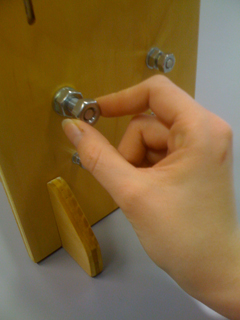Currently used outcome measures for cervical spinal cord injury (SCI) are not sensitive enough to pick up subtle changes in the upper extremity. Until now there was no assessment available on upper extremity function that gained international acceptance to become a gold standard. Therefore the Graded and Redefined Assessment of Strength, Sensibility and Prehension (GRASSP) has been designed for assessments in subacute, acute and chronic cervical SCI. It focuses on the recovery of muscle, sensory and grasping function over time. The GRASSP demonstrates reliability, construct validity and concurrent validity for use as a standardized upper extremity outcome measure for individuals with cervical SCI (Kalsi-Ryan et al. 2011). Also see...
Currently, a prospective longitudinal study is in progress at the Swiss Paraplegic Centre Nottwil (Switzerland) in collaboration with the University Hospital Balgrist, Zurich (Switzerland), Klinikum Bayreuth (Germany), Klinik für Paraplegiologie, Universitätsklinikum Heidelberg (Germany) and Trauma Center Murnau (Germany) to establish the responsiveness of the GRASSP. The main aim is to evaluate, if small but clinically relevant changes in upper extremity function can be detected with the GRASSP and how GRASSP data relate to independence and quality of life over time.


Kalsi-Ryan S., et al., The Graded Redefined Assessment of Strength Sensibility and Prehension (GRASSP): Reliability and Validity. J Neurotrauma. 2011 Aug 12. [Epub ahead of print]



